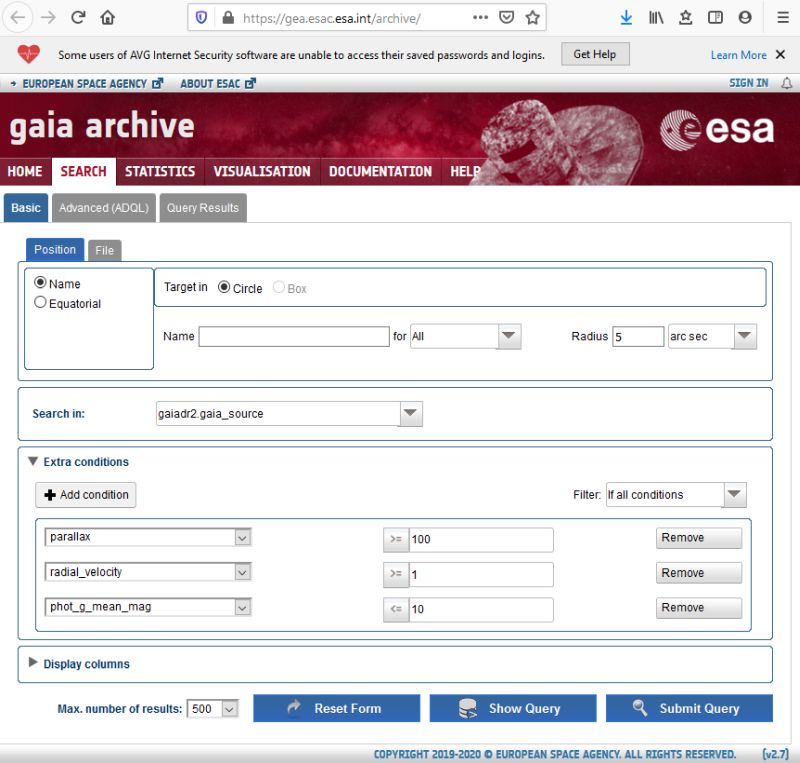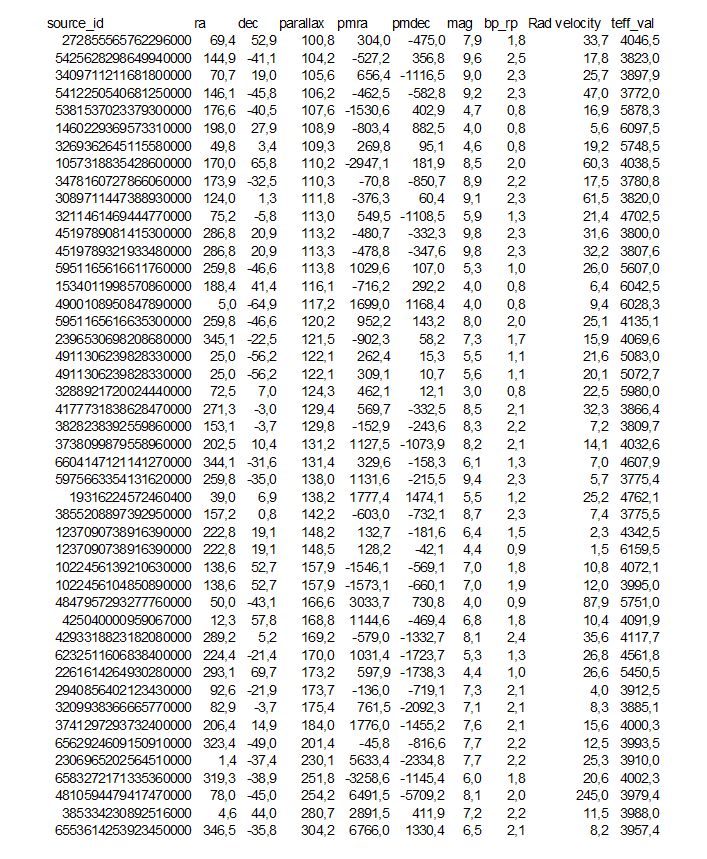|
Advertisement / Annons: |
Astronomy Science data |
Content: |
II, List of objects close to Sun and have a radial velocity:How to create a list with objects with a radial velocity and close to our Sun:Sorry about my first example with the confusing objects. This time I add more filters to get objects that are more likely stars.
This data's purpose is just to make velocity vectors to nearby stars (maybe) to our Sun. A parallax of 0.1 arcsec is the same as a distance of 10 parsec or 32.4 Ly (Light years). Gaia archive:Below is the page / link to start from: 
I use the Basic page to start with. Chose the Gaiadr2.gaia_source (data release 2) to search in. Expand the "Extra Conditions" and add filters. 1 arcsec = 100 milli arcsec, II get 46 objects from this search in the database, even with weaker magnitude it will not be more than 48. Don't forget that Gaia's data does not contain bright stars. Export them as earlier in CSV format. Open office (Excel):This time the objects looks more star like. 
When I set the velocity to not equal 0 I got a totally different result. The data I need to calculate velocity vectors:
These data only consists of objects with a positive radial velocity, but it was only a test. Next time I include the negative velocities also. Notice that most of the stars in the list are cooler than our Sun that has a temperature of 5778 Kelvin. The velocities are relative our Sun's barycenter. I come back about this later, I'm not sure if I shall use Open Office or a more advanced tool to calculate this. At the end I have a need of a tool that can present 3D data, Matlab maybe. |
Some useful links with information:
One limitation in Gaia data is that no bright stars are included. Gaia is optimized to detect weak stars and all star visible to the naked eye over saturate the CCD sensor and not usable. |
|
Credit:
Gaia Collaboration et al. (2016): Description of the Gaia mission (spacecraft, instruments, survey and measurement principles, and operations). |
| Go Back to content |
| Go Back |